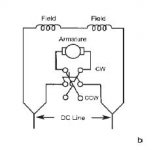challenger
Stainless
- Joined
- Mar 6, 2003
- Location
- Hampstead, NC-S.E. Coast
I am about ready to start building my honey extractor and will, hopefully, use an old Bodine right angle gear motor. It is 1/8hp and the tag says 115vdc but I've been told that the controller I have which is a kb industries unit-w-a 90vdc output will work fine.
My question is about the four leads that come out of the motor. There are 2 black and 2 blue leads. For the heck of it I measured the resistance on each. There is no continuity between the blue wires and the black wires but there is 10 ohm between the 2 blue wires an 742K ohm between the black wires. I've looked all over the Bodine site and cannot find anything. I called and they said it was no longer supported. If anyone can give me tip on the use of these 4 wires I'd greatly appreciate it.
Thanks - Howard
My question is about the four leads that come out of the motor. There are 2 black and 2 blue leads. For the heck of it I measured the resistance on each. There is no continuity between the blue wires and the black wires but there is 10 ohm between the 2 blue wires an 742K ohm between the black wires. I've looked all over the Bodine site and cannot find anything. I called and they said it was no longer supported. If anyone can give me tip on the use of these 4 wires I'd greatly appreciate it.
Thanks - Howard



